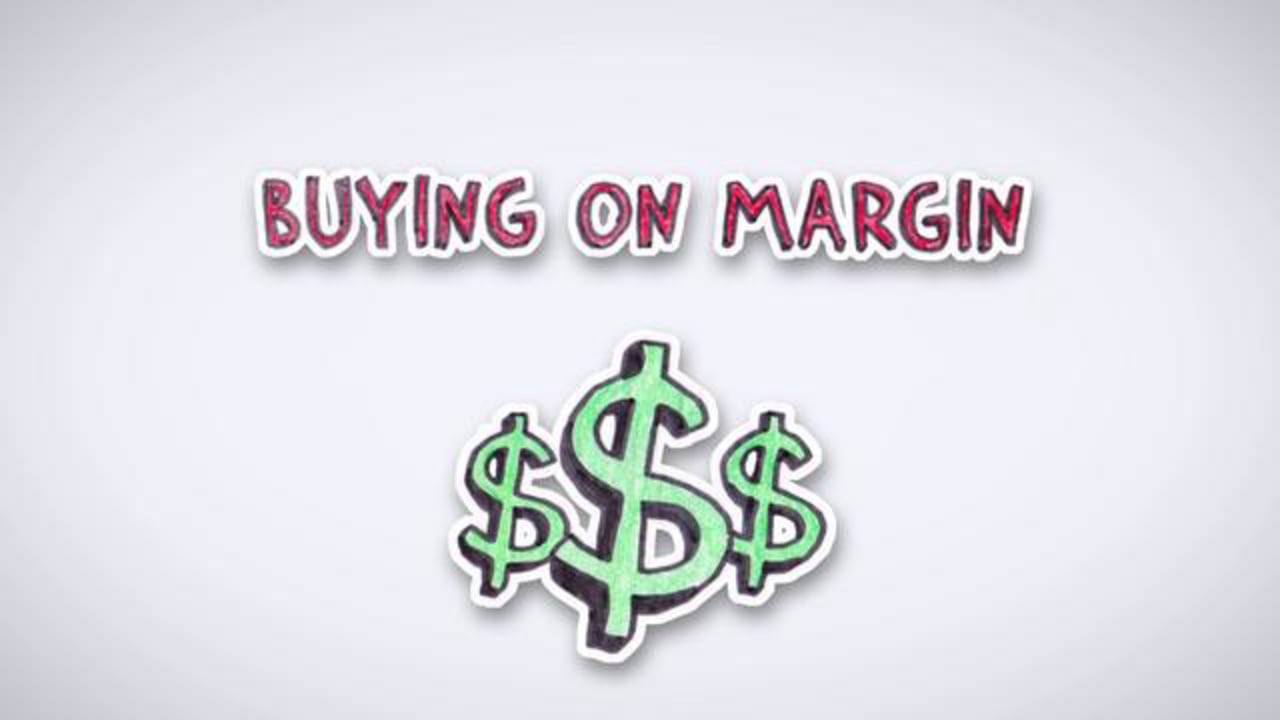
The concept of buying on margin
Purchasing an asset using borrowed money is known as buying on margin. If a stock or asset is priced at a certain amount, then a small percentage of that purchase price (this component is known as down payment) is made by the investor while the rest of the price is borrowed from a bank or a broker.
The creditor lending the money will seek collateral in exchange for agreeing to lend the money to the investor. This collateral happens to be the marketable securities in the investors account. So, if the investor fails to repay the borrowed money to the creditor, then the creditor can sell those marginable securities from the investor’s account to get back the money that was lent.
Before opening a margin account, the investor will be evaluated and approved. Once the account is opened, the total purchasing power of that account will be the money which the investor has (or puts up) in the account and the margin money that is approved for that account.
There are interest rates associated with margin accounts. However, paying interest on margin money is slightly advantageous in the sense that interest rates in this case are not as high as interest rates of credit cards and personal loans. Also there is some flexibility on the repayment schedule. The investor does not have to pay monthly installments. Rather, the interest charges accrue over time and the entire outstanding amount can be paid at a convenient time by the investor. Margin interest is also tax deductible.
Investing on margin money is not riskless by any means. Margin amplifies gains, but it also amplifies the losses. If the securities that an investor purchases using a margin account declines in value, then a significant loss can be made as a result of the leverage that was used to purchase that security.

Opening a margin account
To open a margin account, you have to inform your brokerage that you want a margin account. You can make this indication when you first open a brokerage or investment account. If you already have a running brokerage account, then you might only need to submit a short addendum agreement asking for a margin account to be added to your regular account.
After the form submission, the brokerage will perform a credit check on you. Based on your creditworthiness, the brokerage will set an initial margin limit and a maintenance margin limit on your new margin account. Initial margin is the percentage of an asset’s price which the investor has to pay with his/her own money.
Maintenance margin is the minimum amount of money which needs to be in the margin account before the broker compels the account holder to deposit more money. The maintenance margin is essentially the minimum equity of the investor’s margin account. If the stock price drops below a certain price, then that equity level can go below the maintenance margin limit.
For example, if an investor deposits $100 in a margin account, and if the maintenance margin limit is 50%, then $50 have to be present in the margin account at all times. Once the account falls below $50, the brokerage gives the investor a margin call.
The margin call is basically a notification or warning to deposit more cash into the account. This deposit can come through new money or by selling securities that the account holder already has.
If none of those things happen, then the brokerage will go ahead and sell the investor’s investments to make the maintenance margin limit.
Margin is also sometimes known as a margin loan. It is essentially money that is borrowed to purchase assets or securities. A margin loan is backed with the borrower’s securities as collateral.

An example of buying on margin
Let us assume that an investor deposits $10,000 as initial investment in the margin account. If the maintenance margin is 50%, then that would mean that the investor’s equity should always be above $5,000, which is 50% of the $10,000 initial investment deposit.
The investor wants to purchase shares of a company which is currently priced at $50 a share. The investor wants to buy 100 shares which will cost $5,000. If the initial margin is 50%, then the investor has to put of $2,500 and the brokerage will lend the remaining $2,500 for the total purchase amount of $5,000.
Now, if the stock price goes up to $100, then the total value of the 100 shares held by the investor is $10,000. Out of that amount, $2,500 of margin money plus some interest will have to be returned to the brokerage house. The remaining $7,500 or less will be the investor’s payout. Thus, $2,500 turned to almost 3 times the initial investment. This jump of 3X is disproportionate to the 2X rise in the stock’s price.
On the downside, if the stock price goes from $50 to $25, then the value of the 100 shares held by the investor is now only $2,500. However, the investor already owes $2,500 to the brokerage as margin money. Hence, the investor has to pay the brokerage and take a 100% loss. The initial investment of $2,500 that the investor put up is completely wiped out. A 50% reduction in stock price leads to a 100% loss for the investor.
Thus, the upside and downside are both magnified when using a leverage setup like margin money.
Can anyone buy on margin?
 While there are no specific restrictions on any investor wanting to buy on margin, this concept is not for everyone.
While there are no specific restrictions on any investor wanting to buy on margin, this concept is not for everyone.
Buying on margin is certainly not recommended for a beginner investor or trader. One needs to have significant risk appetite to handle the upsides and downsides of margin trading.
If a security is bought using margin, then it needs to be monitored very closely.
A significant drop in a security’s price (even 50%) can mean a complete wipeout of the investor’s cash or equity. Hence, margin trades can be very stressful.
Certain securities like options contracts cannot be purchased using margin and they have to be paid for using investor cash. Stocks and bonds can be purchased using margins. Commodity futures are often purchased using margin accounts.
